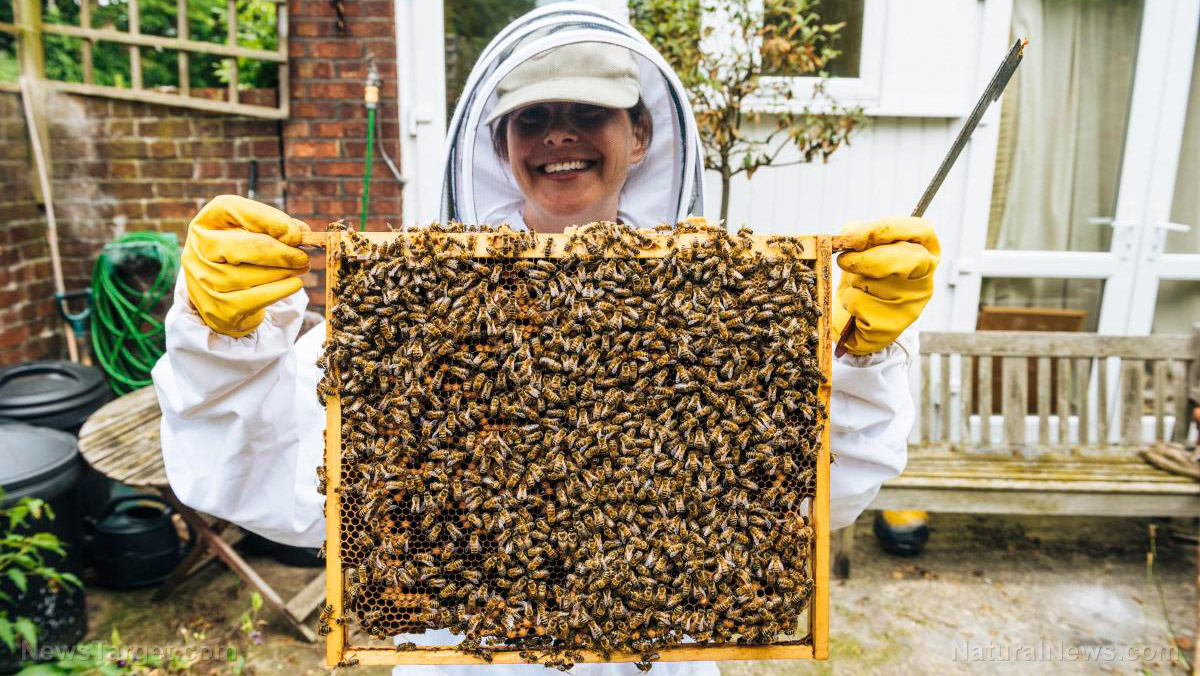The future of algal-biofuels: Study reveals how alga called diatoms harness solar energy for photosynthesis
08/04/2020 / By Divina Ramirez

Scientists from Rutgers, The State University of New Jersey (RU) have exposed the mechanisms behind photosynthesis in diatoms, a major group of algae found in the oceans that produce 20 percent of the Earth’s oxygen.
Their groundbreaking results, published in the journal Proceedings of the National Academy of Sciences, demonstrated that diatoms harness light using an active set of pigment-protein complex.
Scientists from Baylor College of Medicine in Texas and Xiangya Hospital of Central South University in China also contributed to the study.
Photosynthesis in diatoms
The team used a bio-imaging tool to demonstrate for the first time that diatoms use a membrane protein supercomplex called Photosystem II (PSII) to capture sunlight and perform photosynthesis. Each diatom cell contained one active and one inactive set of PSII.
Furthermore, the team found that the active set of PSII had antennae complexes that it used to harness sunlight. The structure of the active set of PSII is also similar to that of pigment proteins like chlorophyll, the green pigment essential in photosynthesis.
On the other hand, the team found no such structure on the inactive set of PSII, thus suggesting that this set did not participate in photosynthesis.
These findings open the door to understanding the limitations of the photosynthetic efficiency of diatoms and other algae. The team hopes to examine this efficiency in light of the feasibility of algal-biofuel production.
Diatoms and other algae can store energy in the form of natural oils that, under the right conditions, can be utilized and transformed into biofuels in place of petroleum and other less sustainable fossil fuels.
Senior author Wei Dai notes that further research is needed in order to understand not only the mechanisms behind the photosynthetic abilities of PSII, but also the mechanisms behind robust biochemical energy production in diatoms.
The pressing need for safe and sustainable fuel sources
Fuels are considered one of the most important resources on earth. But natural sources like fossil fuels are fast running out, and it is this fear of shortage that has been pushing scientists in the direction of biofuel production.
Biofuel is a fuel produced from sustainable biomass materials, such as agricultural and forest products. This fuel is often used and touted as a cleaner, safer and greener fuel than fossil fuels.
For the most part, fossil fuels are biomaterials comprised of decomposing plants, animals, algae and other organisms. But despite being accessible and abundant for the time being, fossil fuels are finite.
In fact, the online scientific publication Our World in Data reports that global oil production and consumption continue to rise. In 2012, the U.S. alone produced 2.37 billion barrels of oil.
This also isn’t to mention the impact of fossil fuels on the atmosphere. In 2008, the nonprofit science organization Union of Concerned Scientists put out an article tackling the hidden costs of fossil fuels.
In their article published online, the group reported that the process of extracting fossil fuels can generate air pollution and harm local communities. Transporting the fuels from the mine, for instance, can cause air pollution and lead to spills.
Burning fossil fuels also releases toxins and harmful substances into the air, and the fuel products themselves can be hazardous to both public health and the environment. Burning coal, for instance, releases sulfur dioxide that contributes to acid rain.
Acid rain, so-called because of its acidic nature, can be harmful to marine life. It has also been found to damage trees and contaminate entire lakes and streams. In humans, acid rain can irritate the skin upon contact.
Nitrogen oxides, another group of gases and compounds released during fossil fuel combustion, also contribute to acid rain and smog. Prolonged exposure to smog can lead to asthma, bronchitis and other conditions that attack the nasal tract.
Biofuels from algae: Challenges and potential
The idea of using algae as a fuel source is no recent conjecture. In fact, it has long been studied for its potential as such.
For one thing, ponds, lakes, streams and oceans are rich in algae, so running out shouldn’t be a problem. Plus, both micro- and macroalgae can be produced on a large scale in a short period of time.
Furthermore, these aquatic organisms aren’t common food sources for most people outside of a handful of edible algae like chlorella and spirulina. Therefore, harnessing them in large quantities for biofuel production shouldn’t cause a problem in terms of food production.
That being said, not all scientists are sold on the idea of algal biofuel. In a recent article published in The Conversation, marine biologist and biosciences professor Kevin Flynn says that it is difficult to scale up the production rate of algal biofuels to generate large enough amounts for commercial use.
For instance, to produce just 10 percent of the transport fuels used across the European Union, ponds three times the area of Belgium need to be scoured for algae. The ponds should also be located near factories as the algae require large amounts of carbon dioxide to photosynthesize.
Nonetheless, recent studies and ongoing research, like the PNAS article, offer a more hopeful outlook into the future of algae as a safer and more sustainable fuel source. (Related: Researchers find a plant that can be used to feed a microalgae strain to boost its potential as a biofuel.)
Read the latest research on diatoms and other algae at Ecology.news.
Sources include:
Tagged Under: algae, BioFuel, diatoms, Ecology, energy sustainability, environment, future science, marine life, Oceans, Plants



















